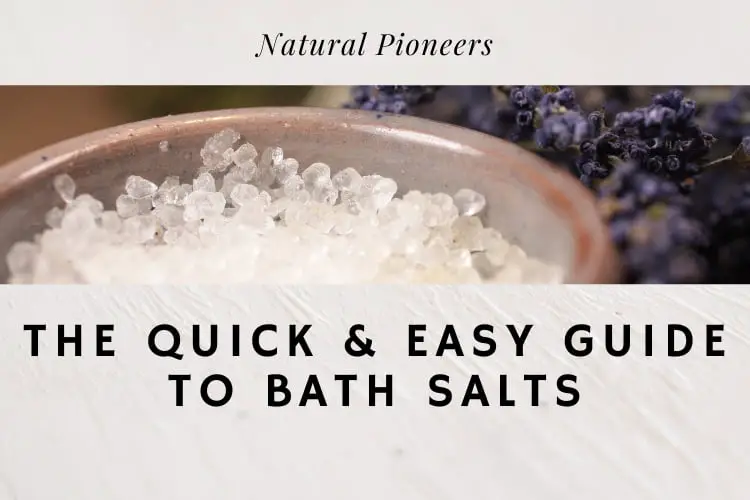
It’s hard to choose a bath salt given the abundance of products available. This guide will provide you with all you need: What works, what to avoid, different skin types, and how much bath salt you should use.
Bath salt is a granular additive for bath water. The word salts refers to mineral salts – not sodium. It’s the complex mineral composition that gives bath salts its health benefits. While added smells & colors are enticing, studies found benefits using 100% pure salts, for example Dead Sea salts.
Let’s go through the 4 steps of this quick and easy guide to bath salts.
1. What Is Bath Salt?
Bath salt is a granular, often fragrant additive for bath water.
The word salts refers to mineral salts – not sodium as we know it in edible salts. While edible salts like sea salt and Himalayan salt can be used as bath salt, most bath salts have a much higher mineral concentration than edible salts.
For example, Dead Sea salts are made up of about 60% magnesium and potassium and only 8% sodium. In contrast, sea salts contain about 98% sodium.
Even though bath salts come in many colors, shapes, textures and sizes, the only really important factor is their mineral composition.
It’s the complex mineral composition that induces the health benefits of a bath salt. While those minerals might give bath salt a certain color (think of pink Himalayan salt), the color is the result of contained natural minerals, not the benefit itself.
The same holds true for the particle size of a bath salt. Whether you prefer a fine, coarse or a flaky salt won’t make the difference when it comes to their health benefits.
Ideally pick a bath salt without added ingredients. We recommend you choose a product free of toxins like artificial colors and aromas. While smells and colors might be enticing, the health benefits of bath salts in studies were achieved with 100% of pure salt (Dead Sea salt for example).
Especially when using edible salts as bath additive, be aware that regardless of its color and where it comes from, all edible salt was at some point nothing else than sea water. Even expensive, well-traveled or well-marketed special salt is chemically nothing more than sodium chloride. Yes, this includes “mineral rich” sea salts and Himalayan salt (1-3%).
Another common misconception comes along with the labeling of “organic salt”. While we at Natural Pioneers are definitely advocates for organic produce and meats, organic salt cannot be “organically grown” because it is a mineral, not a plant. The United States have no recognized organic certification for salt.
Let’s talk about the basic bath salts that build the foundation of any bath salt product.
2. Bath Salts | The Essentials
Dead Sea Salts
- What is it? Dead Sea salts are extracted from the Dead Sea, a salt lake in the Middle East. Dead Sea Salts are made up of about 60% magnesium and potassium, 8% sodium and some rare minerals. Regular Dead Sea salts are not safe for consumption and taste quite bitter.
- Who should use it? Dead Sea are ideal for people whose skin needs extra care. This includes people who battle with dry skin, inflammation, redness, aging signs, acne, and even psoriasis and eczema. Moreover, Dead Sea salts help in the treatment of arthritis. [1]; [2]; [3]; [4]; [5]; [6]
Note: Make sure you use 100% Dead Sea salts with no added ingredients to achieve the same effects as seen in studies.
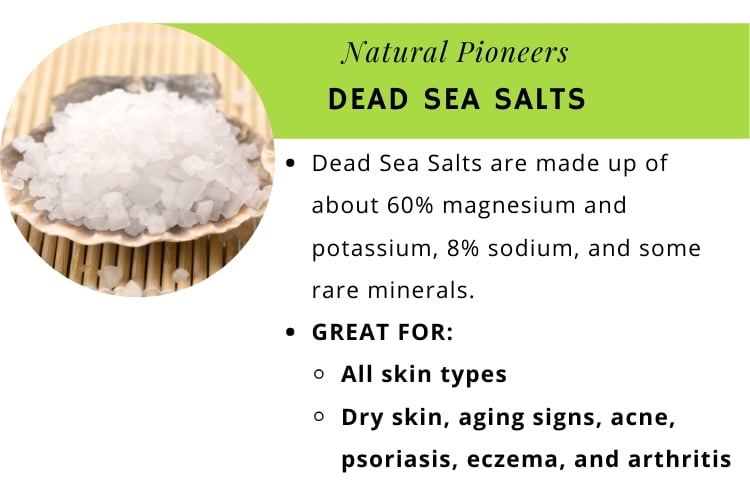
Colloidal Oatmeal
- What is it? Colloidal oatmeal is a centuries-old treatment and consists of tiny oat particles ranging between 1 and 1000 nanometers in diameter. This mineral rich bath salt is packed with proteins, polysaccharides, lipids, vitamin E, saponins, and enzymes. [7]
- Who should use it? Collodial oatmeal helps anyone with dry & irritated skin, rashes, erythema, burns, itch, and eczema. [8], [9], [10], [11]
Note: Studies indicate that colloidal oatmeal cleanser and cream provide additional benefits for damaged skin. [12], [13]
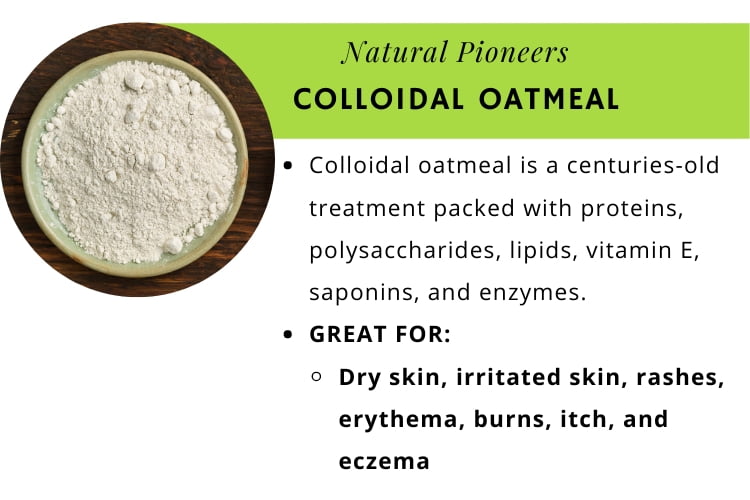
Rice Starch
- What is it? Rice starch is a white powder and the main component of rice. Next to the starchy carbohydrate, rice starch contains proteins, lipids, calcium, potassium, magnesium, and sodium. [14]
- Who should use it? Rice starch is ideal for anyone suffering from SLS (sodium lauryl sulfate) damaged skin. SLS is a common ingredient in beauty products, body washes, cleaning products and even toothpaste. 15 min baths twice a day in bath water with added rice starch led to a 20% improvement on the healing capacity of damaged skin. [15]
Note: Make sure you avoid ingredients that could potentially harm your skin. Always choose 100% rice starch with no added ingredients to achieve similar results as seen in studies.
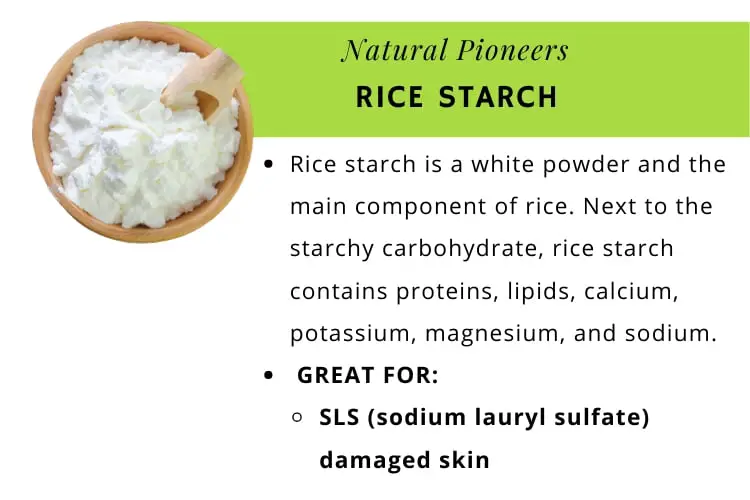
Sea Salt
- What is it? Sea salt is salt that is produced by the evaporation of seawater. It comes in many names: Bay salt, solar salt, Mediterranean salt, and European salt. Sea salt consists of about 98% sodium and contains trace amounts of phosphorus, bromine, boron, zinc, iron, manganese, copper and silicon.
- Who should use it? According to studies, sea salt shows a beneficial healing effect on skin when used as a bath additive. [16], [17] Sea salt is ideal when you have no other bath salt (like Dead Sea salts) at hand. Sea salt can be used in all skin types.
Note: In case you’re wondering: Swimming in the salty ocean won’t heal your skin. In fact, salty ocean water alters the skin microbiome and may increase the likelihood of infection, according to studies. [18], [19], [20], [21]
Make sure that you take your salt bath at home, using clean water and a quality sea salt with no added ingredients.
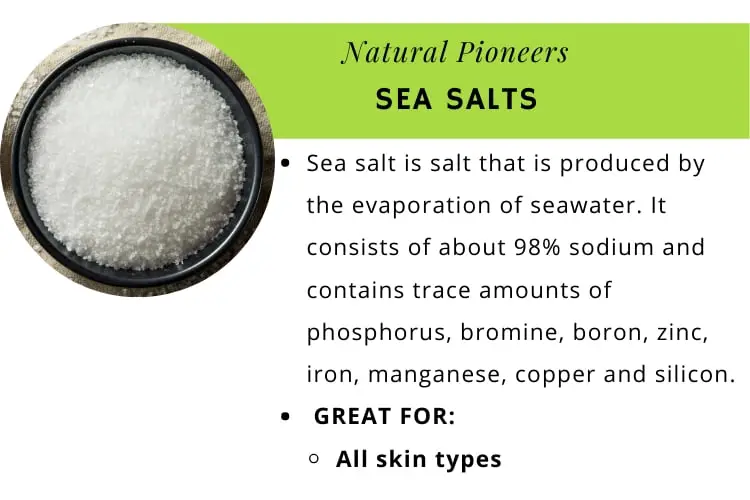
Himalayan Salt
- What is it? Himalayan salt is rock salt from Pakistan. The salt often has a pinkish tint due to mineral impurities. Unlike table salt, Himalayan salt (just like sea salt) is a more natural source of salt that has not been refined or enriched with iodine or anticaking agents. About 98% of Himalayan salt is sodium, the other 2% are trace amounts of minerals, 84 in total.
- Who should use it? While there are no studies on Himalayan salt as a bath additive itself, its mineral composition is almost identical to sea salt giving us reason to conclude that Himalayan salt may show a beneficial healing effect on skin when used as a bath additive. Himalayan salt can be used for all skin types. [22], [23]
Note: Himalayan salt (just like sea salt) shows higher amounts of beneficial minerals than highly-refined table salt. Make sure you choose a natural bath salt and avoid table salt with added anti caking agents and iodine.

Epsom salt
- What is it? Epsom salt is also called magnesium sulfate. It’s made up of magnesium, sulfur, and oxygen. It gets its name from the town Epsom in England, where it was originally discovered.
- Who should use it? Frankly, no one. Despite many scientific tests, not one single study done on Epsom salts can find scientific evidence for all its imposed health benefits. It is believed that its magnesium is absorbed through skin which soothes the mind and muscles. To this day, there is no evidence for the absorption of magnesium through skin. [24], [25]
Note: If you have no bath salt available, regular sea salt or Himalayan salt serves as a great workaround and provides more proven benefits than Epsom salt.
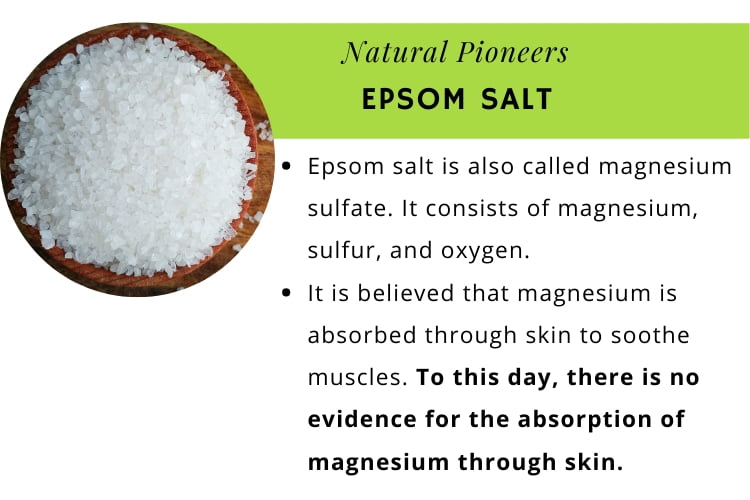
3. How Much Bath Salt Do I Need?
- Colloidal Oatmeal: 1 cup
- Rice Starch : 1/2 cup
- Dead Sea Salts: 1/2 cup
- Sea Salt: 1 cup
- Himalayan Salt: 1 cup
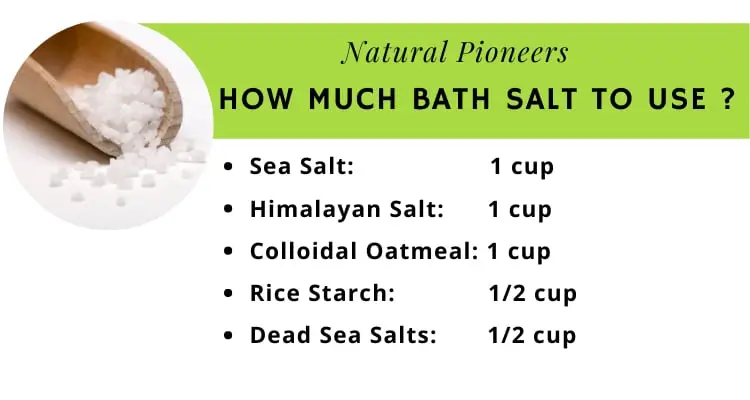
4. How To Use Bath Salts | 3 Steps
- Start running warm water into a clean bathtub. Be sure it’s not too hot as hot water can aggravate inflamed skin and draw moisture from your skin. People with dry skin should soak no longer than 10 minutes.
- Add your favorite bath salts (our favorite: Dead Sea salts) under the running tap and mix with your hand until completely dissolved.
- Additionally, for dry skin: After bathing, pat the skin lightly with a soft towel, leaving it slightly damp. Within three minutes, liberally apply a moisturizer for dry skin all over the body. The three-minute time frame ensures your skin is still damp and won’t dry out any further. Make sure to avoid added perfumes and irritants in your lotion.
